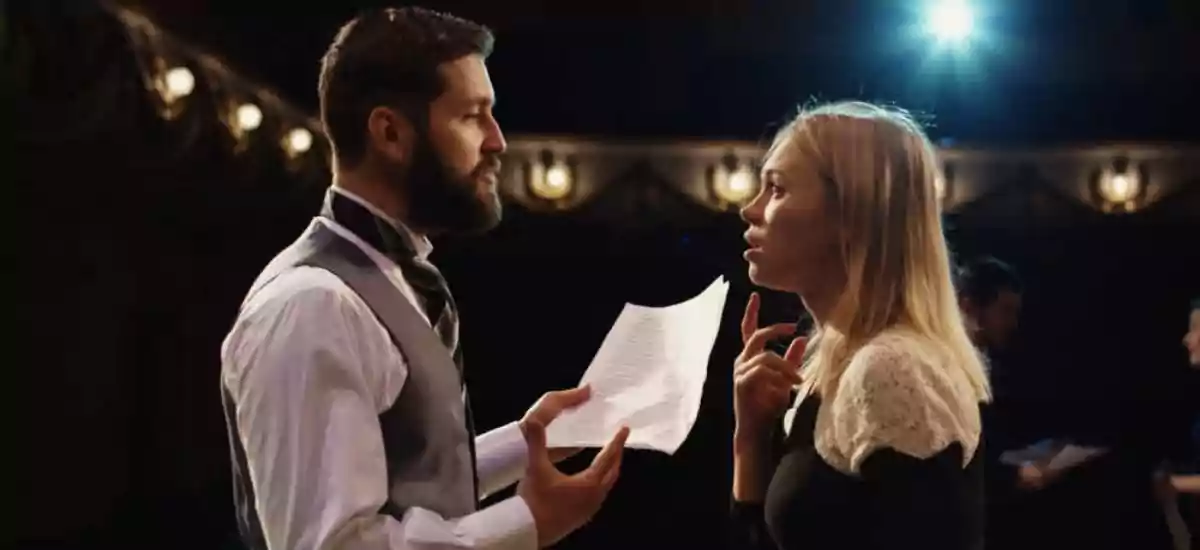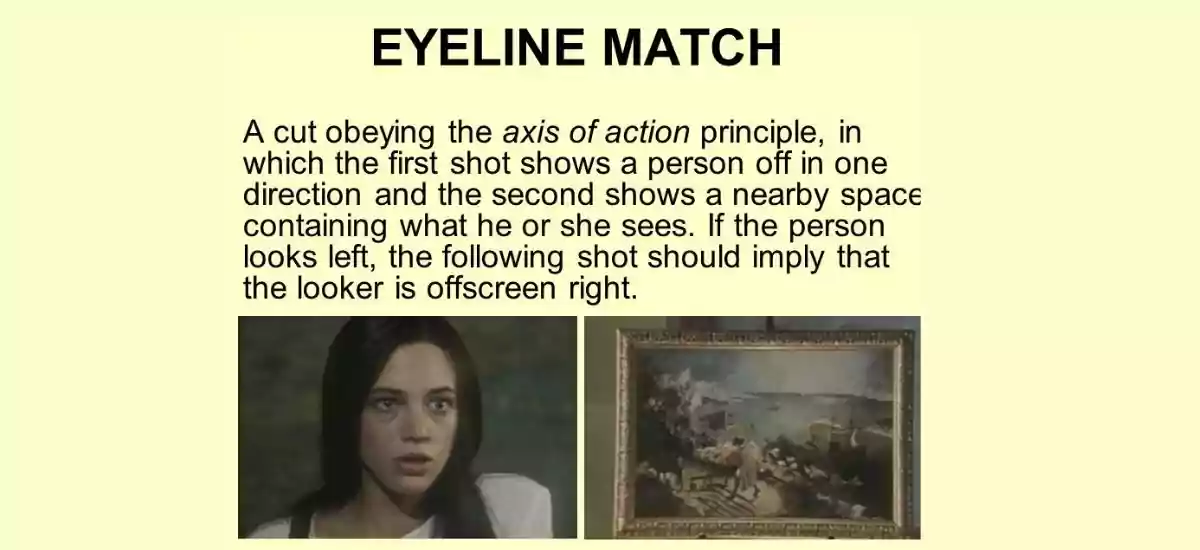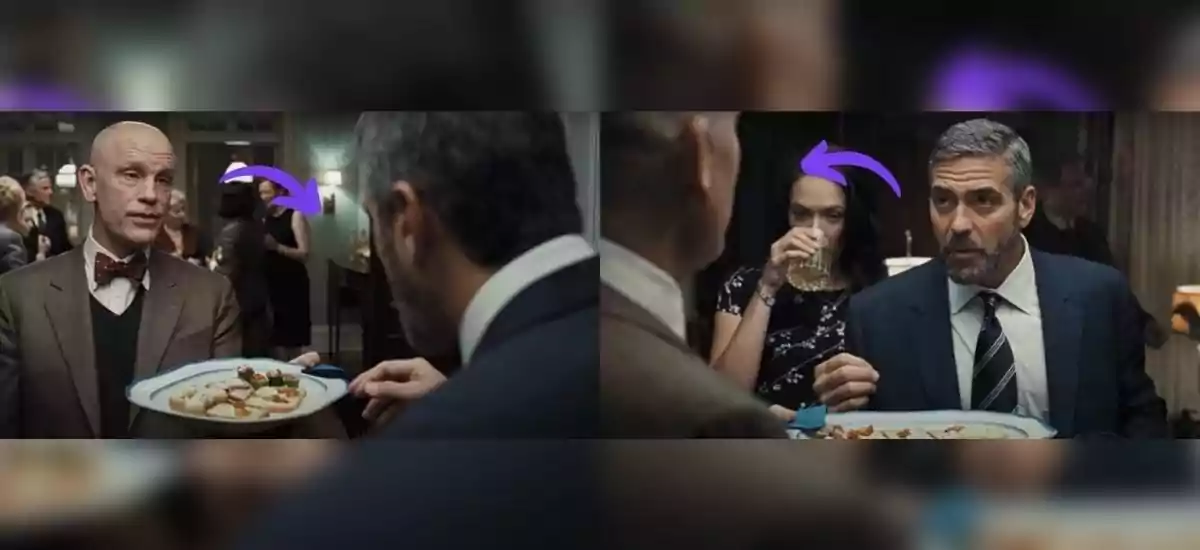Eyeline In Film
The “eyeliner” refers to the place actors restore their gaze—literally, their eyes’ line of sight. Whether you’re an actor, director, or an on-set PA, it is integral to have a strong draw close of this concept.
When taking pictures a movie or video production, actors want to be aware of the place to look.
Why Are Eyelines Important?
Eyeliners assist the target market recognize what the personality is searching at. Often, when an actor seems to be speaking immediately to some other character, their eye line is directed at the camera, no longer at the different actor.
The eyes are one of the most effective bodily equipment that an actor has, mainly given the intimacy of tv and movie acting; an emotional connection with the viewer can be cast or severed instantaneously. In tandem with how a personality is looking, the place they’re searching clues viewers into their ideas and motivations. Ideally, audiences ought to be capable to figure sure records about a scene even with audio muted.
From an modifying perspective, even the most state-of-the-art manufacturing can’t treatment sloppy or inconsistent eyeliners. When finished well, it’s a vital issue of filmmaking that’s invisible to viewers. When it’s not, viewers will feel that something is off, and they’ll be pulled out of the story.
The Definition Of Eyeline Match
Eyeline match is a movie modifying method to point out to the target audience what a persona is seeing. Eyeline suit approves the target audience to trust that they’re searching at some thing via the eyes of the character.
Eyeline healthy additionally refers to an enhancing approach that ensures continuity of the characters’ gazes. It offers the phantasm that the two characters are searching at every other. In a scene with a couple of photographs of specific characters interacting, it have to be clear who is searching at whom. This is completed by means of having the actor focal point on a mark—usually a red X subsequent to the digicam lens— when capturing close-ups. Characters are proven speaking to one every other in a broad shot, and then in the close-up, they appear at the digital camera from the identical attitude that they earlier regarded at the different character, and the pictures are intercut in post-production.
Effective Eyeline Match Techniques
A director need to reflect on consideration on these strategies for advantageous eyeliner matching:
Matching close-ups: A framing approach that shoots two actors with the equal digicam lens, height, distance, and placement to make their eyeliners match. When edited together, their matching eyeliner reinforces to the target market that they’re looking at one some other and engaged in conversation. Pay cautious interest to actors’ heights; if one is considerably taller than another, you might also want to alter the digital camera angles to provide the phantasm that they’re searching at every other.
Shot reverse shot: An enhancing method that shows two characters are searching at every other, regularly with an over-the-shoulder shot. When the two photographs are stitched together, their eyeliners ought to fit and it ought to be clear they’re searching at every other, even although you can solely see one persona at a time.
The 180-degree rule: A digital camera motion tenet that helps viewers recognize how two characters stand and journey their environment about one. The 180-degree rule attracts an imaginary axis between two characters. One facet of the axis indicates one character’s factor of view, and the different facet suggests the different character’s factor of view. When the digital camera crosses that imaginary line, the characters change locations on screen; their eyeliner no longer fits up properly, and they no longer show up to be searching at every other.
The 180-degree rule intends to keep away from disorientation and distraction for the target audience by using preserving the identical left/right relationship between the two characters. During blockading rehearsal, create a line on the floor with gaffer’s tape so each person is on the equal web page about the imaginary axis and how crossing the line impacts eyeliners.
How Are Actors’ Eyelines Managed During A Production?
Eyeliners can be accounted for as early in the manufacturing manner as storyboarding or constructing a shot list, and they are even greater imperative in postproduction. Everyone on the film’s group is in section accountable for actors’ eyeliners due to the fact failure to get them proper can compromise the exceptional of the remaining footage. It’s a fundamental issue of blockading when mapping out the spatial good judgment of a scene.
Directors frequently role their actors in a way that helps the target audience recognize the bodily space. For example, if there is a disparity in top between characters, the distinction can be adjusted via blocking, props, and digicam placement so that actors’ eyelines healthy up when they appear at one another.
Of course, the extent of such planning may additionally range primarily based on the creator’s style—but there are some simple suggestions to follow. Most importantly, eyeliners have to be unique and consistent. This allows the editor to comprise “eyeline matching” to hold continuity and coherence.
Most often, this is executed via a shot/reverse shot: The viewer sees a personality searching at and reacting to an object, then the director cuts to a reverse shot, displaying that object from the character’s perspective. If the eyeliner is off, the character’s spatial relation to the object won’t make sense.
How Should An Actor Prepare Their Eyelines Ahead Of Production?
As an actor, you ought to be conscious of your eyeliner each when filming and as phase of your preparation. The greater complicated the shoot, the extra tough this can be. For an motion sequence that facets a couple of objects transferring thru the frame, an actor need to plot out their eyeliners in advance.
Additionally, eyeliner ought to no longer solely be technically deliberate however additionally emotionally rehearsed. Failure to do so can end result in a overall performance that reads as stilted. When you’re strolling traces at home, set down marks in the room (bright tape or Post-it notes work well) that correspond with the place your eyeliner falls inside a scene. If a second calls for problematic emoting, attempt the use of a photo or object that inspires that feeling in you.
Record yourself, if possible, so you can evaluate and revise. You possibly won’t be in a position to replicate particular taking pictures conditions, however the intention is to set up consistency so that you’re no longer mentally cueing your eye moves in the course of genuine takes. Eyeliners need to be folded into the reality of your overall performance as naturally as line memorization.
Even when you get to set, relying on the shot and the layout, you may additionally now not constantly have the luxurious of searching at the object or individual that your personality is supposed to be searching at. Sometimes, you may also have to act contrary nothing—or an object that stands in for a CGI character. When that’s the case, Oscar-winning animator Patrick Osborne says that the actor’s “eyeliner wants to be consistent.
The animator has to justify the place the actor is searching after the fact…. That’s the place we have to put the [CGI] character.” In such cases, a crew member can tape an X to mark the meant focal factor off-set or to the aspect of the digital camera lens.
How Can Actors And Directors Avoid Bad Eyelines?
Everyone on set must pay interest all through blocking off and rehearsals to make sure that nothing distracts from or obstructs the actor’s eye line as soon as cameras begin rolling.
In “Making Movies,” legendary filmmaker Sidney Lumet wrote: “Just earlier than we roll, any well-trained [assistant director] will constantly say, ‘Clear the eyeliner, please.’ If William Holden is making love to Faye Dunaway, he doesn’t desire to see some teamster sipping espresso in the back of her.”
As with most rules, eyeliners aren’t dogmatic and ironclad. After all, an actor searching at the digital camera can be a serendipitous accident or arresting on purpose. But a association grasp of eyeliner stays an indispensable device for actors and creators.
Where Do Actors Look When Filming?
If a persons’ taking a picture or video of you, you are “trained” to seem to be at the digicam due to the fact it is normally a portrait-style shot. Actors are skilled to now not appear at the camera. Looking at the digicam is referred to as “spiking the camera” and it potential that you’ve got simply ruined a shot and you have to begin over.
You May Also Like To Read-Chekhov Acting Techniques: What Actors Should Know About



